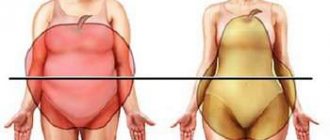Shorts, T-shirt, sneakers, headphones and open arms of the morning city. Ease, accessibility and fun. These are my associations with running. That's why I go outside and run. But each of us has our own motives, and one day a simple buzz becomes not enough. Thoughts about the results appear. Questions arise in my head:
- How fast can I run?
- How do my running performance meet sports standards?
- What to strive for and what can be improved?
A runner's level of physical fitness is determined by the time it takes him to cover a given distance. Therefore, the faster the athlete, the higher his class. But the question is: what to rely on to assess your own physical fitness? How to determine your fitness level?
The first is participation in any competition. Only by competing with other people can you understand how much stronger or weaker you are than your opponents.
The second is running standards.
What are running standards?
Running standards are officially established time indicators, the achievement of which, under certain conditions, gives the right to receive a sports title or sports category.
Of course, the title of Master of Sports is an elusive height for a non-professional athlete. However, guided by the standards, we can determine for ourselves the guidelines and goal that we want to achieve in the process of running, building our training program based on this goal.
In our country, running standards and the conditions for their implementation are established by the All-Russian Athletics Federation. A complete list of athletics standards, including running, is presented on the official website of ARAF.
How to quickly and accurately calculate your correct weight
What is the point of having running standards?
How can existing running standards be useful not for an athlete, but for an ordinary person who wants to improve their health? Each of us needs to work on ourselves, breaking the bar of what is possible. For example, if a man easily runs a distance of 5000 m, then the norm for him will be a distance of 7500 m. To continue development, he must overcome a distance of 10 kilometers. That is, the norm is half the possible, and development is double the effort of the possible. Possible is a variable value; all changes that occur with an athlete during the development process must be monitored and taken into account in order to objectively calculate the next load threshold.
Sport is the generalized physical experience of millions of people of the past, which allows us to clearly know the limits of the possible, what a person can objectively achieve by practicing any sports discipline. Running standards are a guideline for a person who wants to get a positive result - a sports qualification or a physical therapy effect. Without standards, it is difficult to evaluate the efforts achieved. They do not always correspond to the real state - an athlete can overestimate or underestimate his results.
The harm of a biased assessment made by a person is very significant. If a novice long jumper is unable to clear a jumping pit, there will be no danger, but when jumping over a deep mountain chasm, a false belief can cost him his life. Orienting an athlete to standards will allow him to clearly understand his capabilities and steadily improve his personal results .
Tables of norms have been compiled over decades by specialists in the field of sports and sports medicine. Regulatory data were repeatedly adjusted and changed; over time, this process led to the emergence of figures that can be called stable. For example, school standards for running, relevant for the Soviet period, differ from those that are in force now. In the USSR, a 9th grade student (15 years old), in order to get an “A” at a distance of 100 meters, had to run it in 13.5 seconds. The current standard is 14.4 seconds. The difference is quite significant; it allows us to conclude that physically modern schoolchildren, unfortunately, are inferior to their peers of the 80s.
What ranks and categories exist in running?
Sports titles
- MSMK - International Master of Sports
- MS - Master of Sports
Sports categories
- CMS - Candidate for Master of Sports
- I category
- II category
- III category
Youth sports categories
- I category
- II category
- III category
The sports title of MSMK is awarded from the age of 16; MS sports title - from 15 years of age; CMS sports category - from 14 years old; I, II, III sports categories - from 10 years.
Procedure for assigning categories and titles to athletes
In order to receive or increase a rank, an athlete must fulfill standards that will confirm the right to receive a rank or title.
It is not enough to just meet the time limits when running, you need to confirm them at an official competition and the higher the rank, the larger the scale the event should be.
For example, the title of master of sports must be awarded at a competition at least at the federal, Moscow, St. Petersburg or district level. A master of sports of international class is awarded accordingly at international competitions.
At the same time, there must be at least three sports judges with a confirmed All-Russian category in the judging. On the website of the Athletics Federation there are lists of judges who can judge Russian competitions at any level. To avoid misunderstandings, athletes are advised to be aware of whether the judges of the competition in which they plan to receive a rank have the right to award ranks.
Among other things, a contender for a title or rank must represent a national team, district, city, region, depending on the scale of the competition. It’s also better to take care of this in advance, and even if you are an independent athlete, join the local community so that you are given the right to pass the standard.
The results of fulfilling the standard must be recorded in compliance with all competition norms with the full consent of the members of the refereeing commission. An athlete who has been awarded a rank or title, as confirmation, receives a certificate or diploma signed by the head or authorized official of the regional sports federation or division of the federal body under whose authority the competition was held.
If an athlete has a classification book, then information about the assignment of a sports category is entered into it and certified by the seal and signature of a representative of the sports organization.
If there is no athlete’s classification book, then with the assignment of a title or category it is issued, and a badge of the awarded sports category is also awarded.
The current standards for running, like other sports, were approved by the Ministry of Sports and Tourism of Russia by regulatory act No. 698 dated October 18, 2006 and are valid from April 1, 2020. If changes are not planned to be made before the deadline, they will be valid until 2021 inclusive.
For each distance (100, 200, 300, 400 and more meters) a standard has been established, which naturally differs for men and women.
There are also separate standards for different types of running:
- running at the stadium,
- running on the highway
- relay race,
- obstacle course,
- cross running.
Running standards can be used for reference purposes when preparing to receive a title or rank, in order to gradually train endurance and plan training volumes.
How to get a title or rank in running?
Obtaining titles and ranks in running is a complex procedure. Just running the distance within the standard is not enough. The result must be recorded at official competitions, and the higher the rank or title, the larger the competition should be.
Also in some cases, the method of timing (electronic or manual), the composition of the panel of judges, and the presence of athletes with already assigned titles among the participants are important.
So, for example, the sports title MS is awarded for results shown at official competitions not lower than the status of the championship of the federal district of the Russian Federation, zonal qualifying competitions, championships in Moscow, St. Petersburg, with participation in judging competitions in the composition of the State Jury of at least 3 -x sports judges of the All-Russian category.
Another important point is that you won’t be able to just get to an official sporting event from the street. To do this you need to be a representative of any national team. This can be a team from a youth sports school, university, district, region, region, country, depending on the level of competition.
Summarizing the above, we can highlight the following basic conditions for obtaining a sports category or title in running:
- Take part in official competitions as part of a team
- Take a certain place or meet the standard
- Results must be documented
- Submit documents for obtaining a title or rank to the All-Russian Athletics Federation
I think we've sorted out the formalities. Let's move on to specific numbers. There is no point in providing a complete list of standards; it is quite cumbersome. Let's look at the main individual running distances without relays and hurdles. This is quite sufficient for our topic. And the full version of the document with all athletics standards is always available on the ARAF website).
One hundred meter running technique
Each of the sprint distances includes 4 stages from start to finish:
- Start
- Starting acceleration
- Distance running
- Finishing
Success is guaranteed to the athlete who perfectly completes each of the four stages. But in modern sprint there has never been such an athlete. Even the king of short distances, Usain Bolt, often loses to his opponents in the first 2 stages.
Biomechanics specialists attribute Bolt’s unsuccessful starts to his height, which exceeds the norm by 4 cm. It would seem that four centimeters cannot play such a significant role, but in fact, every time it affects the athlete’s results.
On this subject, Usain Bolt once said:
“Well, let my height prevent me from breaking out from the start. But after 50 meters I have no equal!”
The athlete’s words are confirmed by numerous videos. Let's look at the example of a race in which the last current record was set in the 100-meter run with a result of 9.58 seconds according to auto timing.
Technique” for overcoming 4 stages.
Start. Any distance in sprint running welcomes a low start. Moreover, at international competitions, a high start is completely unacceptable.
A low start allows you to gain significant speed without taking a single step. The better you can push off from the blocks, the more likely the athlete will show a good result. Therefore, every sprinter pays great attention to how he starts.
Starting acceleration. After leaving the start, the second stage begins, which involves gaining maximum speed in a minimum distance. To reach maximum speed, a professional sprinter needs 40-60 meters of distance.
“To gain speed faster, it is recommended to take three short steps from side to side with maximum frequency. At the same time, it is worth remembering that it is prohibited to step on the opponent’s track line.”
Running the distance. The stage that fans like more than others. It is at the third stage of the hundred-meter race that athletes show their maximum speed. The main task in this segment is not to lose the speed gained and maintain it until the finish.
Professional athletes never look around, because unnecessary movements cause a loss of speed, and therefore worsen the result in the finishing protocol.
Finishing. The last few meters of a sprint are rarely easy. It was thanks to the sprint that humanity had to invent a photo finish, which allows you to determine which of the athletes was first at the finish line by hundredths of a second.
There are two tricks that allow you to leave your opponents in the dark in the last centimeters of the distance.
The first trick is the chest throw. It consists of a sharp forward movement of the chest when finishing. In this case, the arms are pulled back and the head tilts forward. In fact, the first part of the body that crosses the finish line is the head, but for ease of understanding we decided to call it the chest throw, because the head throw sounds very ambiguous.
Standards for 100m running
| Name of the sports discipline in accordance with the VRVS | Units | Sports titles | Sports categories | Youth sports categories | |||||||
| MSMK | MS | KMS | I | II | III | I | II | III | |||
| MEN | |||||||||||
| 100m run | manual chronom. | sec. | 10,7 | 11,2 | 11,8 | 12,7 | 13,4 | 14,2 | 15,2 | ||
| self-timing | sec. | 10,28 | 10,64 | 10,94 | 11,44 | 12,04 | 12,94 | 13,64 | 14,44 | 15,44 | |
| WOMEN | |||||||||||
| 100m run | manual chronom. | sec. | 12,3 | 13,0 | 13,8 | 14,8 | 15,8 | 17,0 | 18,0 | ||
| self-timing | sec. | 11,32 | 11,84 | 12,54 | 13,24 | 14,04 | 15,04 | 16,04 | 17,24 | 18,24 | |
Standards for running 100 meters for those entering contract service
| Standard | Requirements for secondary school students (grade 11, boys) | Minimum requirements for categories of military personnel | |||||
| 5 | 4 | 3 | Men | Men | Women | Women | |
| up to 30 years old | over 30 years old | up to 25 years | over 25 years old | ||||
| 100 meters | 13,8 | 14,2 | 15,0 | 15,1 | 15,8 | 19,5 | 20,5 |
Standards for 200m running
| Name of the sports discipline in accordance with the VRVS | Units | Sports titles | Sports categories | Youth sports categories | |||||||
| MSMK | MS | KMS | I | II | III | I | II | III | |||
| MEN | |||||||||||
| 200m run | manual chronom. | sec. | 22,0 | 23,0 | 24,2 | 25,6 | 28,0 | 30,5 | 34,0 | ||
| self-timing | sec. | 20,75 | 21,34 | 22,24 | 23,24 | 24,44 | 25,84 | 28,24 | 30,74 | 34,24 | |
| WOMEN | |||||||||||
| 200m run | manual chronom. | sec. | 25,3 | 26,8 | 28,5 | 31,0 | 33,0 | 35,0 | 37,0 | ||
| self-timing | sec. | 22,92 | 24,14 | 25,54 | 27,04 | 28,74 | 31,24 | 33,24 | 35,24 | 37,24 | |
Table of rank standards for running for men
Running in the stadium
| Distance | Timing | Circle length | MSMK | MS | KMS | I category | II category | III category | I junior discharge | II junior discharge | III junior discharge |
| 10000 m | manual | – | – | – | 30:50,0 | 33:10,0 | 35:30,0 | 38:40,0 | – | – | – |
| auto | – | 28:05,24 | 29:25,24 | 30:50,24 | 33:10,24 | 35:30,24 | 38:40,24 | – | – | – | |
| 5000 m | manual | – | – | – | 14:40,0 | 15:40,0 | 16:45,0 | 17:55,0 | 19:10,0 | 20:50,0 | – |
| auto | – | 13:27,24 | 14:00,24 | 14:40,24 | 15:40,24 | 16:45,24 | 17:55,24 | 19:10,24 | 20:50,24 | – | |
| 3000 m | manual | 200 m | – | – | 8:32,0 | 9:02,0 | 9:42,0 | 10:22,0 | 11:02,0 | 12:02,0 | 13:22,0 |
| 400 m | – | – | 8:30,0 | 9:00,0 | 9:40,0 | 10:20,0 | 11:00,0 | 12:00,0 | 13:20,0 | ||
| auto | 200 m | 7:54,24 | 8:07,24 | 8:32,24 | 9:02,24 | 9:42,24 | 10:22,24 | 11:02,24 | 12:02,24 | 13:22,24 | |
| 400 m | 7:52,24 | 8:05,24 | 8:30,24 | 9:00,24 | 9:40,24 | 10:20,24 | 11:00,24 | 12:00,24 | 13:20,24 | ||
| 1 mile | manual | – | – | – | 4:16,5 | 4:30,0 | 4:54,0 | 5:19,0 | – | – | – |
| auto | – | – | 4:03,74 | 4:16,74 | 4:30,24 | 4:54,24 | 5:19,24 | – | – | – | |
| 1500 m | manual | 200 m | – | – | 3:56,5 | 4:09,5 | 4:27,0 | 4:47,0 | 5:12,0 | 5:32,0 | 6:12,0 |
| 400 m | – | – | 3:54,5 | 4:07,5 | 4:25,0 | 4:45,0 | 5:10,0 | 5:30,0 | 6:10,0 | ||
| auto | 200 m | 3:40,24 | 3:48,24 | 3:56,74 | 4:09,74 | 4:27,24 | 4:47,24 | 5:12,24 | 5:32,24 | 6:12,24 | |
| 400 m | 3:38,24 | 3:46,24 | 3:54,74 | 4:07,74 | 4:25,24 | 4:45,24 | 5:10,24 | 5:30,24 | 6:10,24 | ||
| 1000 m | manual | 200 m | – | – | 2:29,8 | 2:38,8 | 2:50,8 | 3:04,8 | 3:19,8 | 3:36,8 | 3:55,8 |
| 400 m | – | – | 2:28,0 | 2:37,0 | 2:49,0 | 3:03,0 | 3:18,0 | 3:35,0 | 3:54,0 | ||
| auto | 200 m | – | – | 2:30,04 | 2:39,04 | 2:51,04 | 3:05,04 | 3:20,04 | 3:37,04 | 3:56,04 | |
| 400 m | – | 2:22,24 | 2:28,24 | 2:37,24 | 2:49,24 | 3:03,24 | 3:18,24 | 3:35,24 | 3:54,24 | ||
| 800 m | manual | 200 m | – | – | 1:56,1 | 2:02,6 | 2:11,6 | 2:21,6 | 2:32,6 | 2:44,6 | 2:59,6 |
| 400 m | – | – | 1:54,5 | 2:01,0 | 2:10,0 | 2:20,0 | 2:31,0 | 2:43,0 | 2:58,0 | ||
| auto | 200 m | 1:48,10 | 1:50,84 | 1:56,34 | 2:02,84 | 2:11,84 | 2:21,84 | 2:32,84 | 2:44,84 | 2:59,84 | |
| 400 m | 1:46,50 | 1:49,24 | 1:54,74 | 2:01,24 | 2:10,24 | 2:20,24 | 2:31,24 | 2:43,24 | 2:58,24 | ||
| 600 m | manual | 200 m | – | – | 1:23,7 | 1:28,7 | 1:34,7 | 1:41,7 | 1:48,7 | 1:55,7 | 2:06,2 |
| 400 m | – | – | 1:22,5 | 1:27:5 | 1:33,5 | 1:40,5 | 1:47,5 | 1:54,5 | 2:05,0 | ||
| auto | 200 m | – | – | 1:23,94 | 1:28,94 | 1:34,94 | 1:41,94 | 1:48,94 | 1:55,94 | 2:06,44 | |
| 400 m | – | – | 1:22,74 | 1:27,74 | 1:33,74 | 1:40,74 | 1:47,74 | 1:54,74 | 2:05,24 | ||
| 400 m | manual | 200 m | – | – | 50,3 | 52,8 | 56,4 | 1:00,8 | 1:05,8 | 1:11,3 | 1:17,0 |
| 400 m | – | – | 49,5 | 52,0 | 56,0 | 1:00,0 | 1:05,0 | 1:10,5 | 1:16,2 | ||
| auto | 200 m | 46,70 | 48,14 | 50,54 | 53,04 | 56,64 | 1:01,04 | 1:06,04 | 1:11,54 | 1:17,24 | |
| 400 m | 45,90 | 47,34 | 49,74 | 52,24 | 56,24 | 1:00,24 | 1:05,24 | 1:10,74 | 1:17,44 | ||
| 300 m | manual | – | – | – | 34,5 | 36,2 | 38,7 | 41,6 | 45,2 | 49,0 | 53,0 |
| auto | – | – | – | 34,74 | 36,44 | 38,94 | 41,84 | 45,44 | 49,24 | 53,24 | |
| 200 m | manual | 200 m | – | – | 22,4 | 23,4 | 24,7 | 26,4 | 28,4 | 30,9 | 34,4 |
| – | – | – | 22,0 | 23,0 | 24,3 | 26,0 | 28,0 | 30,5 | 34,0 | ||
| auto | 200 m | – | – | 22,64 | 23,64 | 24,94 | 26,64 | 28,64 | 31,14 | 34,64 | |
| – | 20,72 | 21,30 | 22,24 | 23,24 | 24,54 | 26,24 | 28,24 | 30,74 | 34,24 | ||
| 100 m | manual | – | – | – | 10,7 | 11,2 | 11,8 | 12,6 | 13,5 | 14,4 | 15,4 |
| auto | – | 10,28 | 10,64 | 10,94 | 11,44 | 12,04 | 12,84 | 13,74 | 14,64 | 15,64 | |
| 60 m | manual | – | – | – | 6,8 | 7,1 | 7,4 | 7,8 | 8,2 | 8,7 | 9,3 |
| auto | – | 6,68 | 6,84 | 7,04 | 7,34 | 7,64 | 8,04 | 8,44 | 8,94 | 9,54 | |
| 50 m | manual | – | – | – | – | 6,1 | 6,3 | 6,6 | 7,0 | 7,4 | 8,0 |
| 30 m | manual | – | – | – | – | – | – | 4,2 | 4,4 | 4,7 | 5,0 |
Highway running
| Distance | MSMK | MS | KMS | I category | II category | III category | I junior discharge | II junior discharge | III junior discharge |
| daily run | 255 km | 240 km | 220 km | 190 km | – | – | – | – | – |
| 100 km | 6:40:00 | 6:55:00 | 7:20:00 | 7:50:00 | finish the distance | – | – | – | – |
| marathon (42.195 km) | 2:13:00 | 2:20:00 | 2:28:30 | 2:38:00 | 2:50:00 | finish the distance | – | – | – |
| half marathon (21.0975 km) | 1:02:30 | 1:05:30 | 1:09:00 | 1:12:30 | 1:17:45 | 1:24:00 | – | – | – |
| 15 km | – | – | 47:00 | 50:00 | 53:30 | 57:40 | – | – | – |
Standards for 300m running
| Name of the sports discipline in accordance with the VRVS | Units | Sports titles | Sports categories | Youth sports categories | |||||||
| MSMK | MS | KMS | I | II | III | I | II | III | |||
| MEN | |||||||||||
| 300m run | manual chronom. | sec. | 34,5 | 37,0 | 40,0 | 43,0 | 47,0 | 53,0 | 59,0 | ||
| self-timing | sec. | 34,74 | 37,24 | 40,24 | 43,24 | 47,24 | 53,24 | 59,24 | |||
| WOMEN | |||||||||||
| 300m run | manual chronom. | sec. | 40,0 | 42,0 | 45,0 | 49,0 | 53,0 | 57,0 | 1.01,0 | ||
| self-timing | sec. | 40,24 | 42,24 | 45,24 | 49,24 | 53,24 | 57,24 | 1.01,24 | |||
400m running standards
| Name of the sports discipline in accordance with the VRVS | Units | Sports titles | Sports categories | Youth sports categories | |||||||
| MSMK | MS | KMS | I | II | III | I | II | III | |||
| MEN | |||||||||||
| 400m run | manual chronom. | sec. | 49,5 | 52,0 | 56,0 | 1.00,0 | 1.05,0 | 1.10,0 | 1.15,0 | ||
| self-timing | sec. | 45,80 | 47,35 | 49,65 | 52,15 | 56,15 | 1.00,15 | 1.05,15 | 1.10,15 | 1.15,15 | |
| WOMEN | |||||||||||
| 400m run | manual chronom. | sec. | 12,3 | 13,0 | 13,8 | 14,8 | 15,8 | 17,0 | 18,0 | ||
| self-timing | sec. | 11,32 | 11,84 | 12,54 | 13,24 | 14,04 | 15,04 | 16,04 | 17,24 | 18,24 | |
Table of rank standards for running for women
Running in the stadium
| Distance | Timing | Circle length | MSMK | MS | KMS | I category | II category | III category | I junior discharge | II junior discharge | III junior discharge |
| 10000 m | manual | – | – | – | 36:10,0 | 38:40,0 | 41:50,0 | 45:30,0 | – | – | – |
| auto | – | 32:00,24 | 34:00,24 | 36:10,24 | 38:40,24 | 41:50,24 | 45:30,24 | – | – | – | |
| 5000 m | manual | – | – | – | 17:00,0 | 18:20,0 | 19:50,0 | 21:20,0 | 23:00,0 | 24:45,0 | – |
| auto | – | 15:18,24 | 16:10,24 | 17:00,24 | 18:20,24 | 19:50,24 | 21:20,24 | 23:00,24 | 24:45,24 | – | |
| 3000 m | manual | 200 m | – | – | 10:00,0 | 10:47,0 | 11:42,0 | 12:47,0 | 13:52,0 | 14:57,0 | 16:12,0 |
| 400 m | – | – | 9:58,0 | 10:45,0 | 11:40,0 | 12:45,0 | 13:50,0 | 14:55,0 | 16:10,0 | ||
| auto | 200 m | 8:54,24 | 9:17,24 | 10:00,24 | 10:47,24 | 11:42,24 | 12:47,24 | 13:52,24 | 14:57,24 | 16:12,24 | |
| 400 m | 8:42,24 | 9:15,24 | 9:58,24 | 10:45,24 | 11:40,24 | 12:45,24 | 13:50,24 | 14:55,24 | 16:10,24 | ||
| 1 mile | manual | – | – | – | 4:58,0 | 5:20,0 | 5:44,0 | 6:13,0 | – | – | – |
| auto | – | – | 4:39,24 | 4:58,24 | 5:20,24 | 5:44,24 | 6:13,24 | – | – | – | |
| 1500 m | manual | 200 m | – | – | 4:38,0 | 4:59,0 | 5:21,0 | 5:47,0 | 6:18,0 | 6:52,0 | 7:32,0 |
| 400 m | – | – | 4:36,0 | 4:57,0 | 5:19,0 | 5:45,0 | 6:16,0 | 6:50,0 | 7:30,0 | ||
| auto | 200 m | 4:08,74 | 4:20,24 | 4:38,24 | 4:59,24 | 5:21,24 | 5:47,24 | 6:18,24 | 6:52,24 | 7:32,24 | |
| 400 m | 4:06,74 | 4:18,24 | 4:36,24 | 4:57,24 | 5:19,24 | 5:45,24 | 6:16,24 | 6:50,24 | 7:30,24 | ||
| 1000 m | manual | 200 m | – | – | 2:57,8 | 3:08,8 | 3:22,8 | 3:38,8 | 3:55,8 | 4:15,8 | 4:46,8 |
| 400 m | – | – | 2:56,0 | 3:07,0 | 3:21,0 | 3:37,0 | 3:54,0 | 4:14,0 | 4:45,0 | ||
| auto | 200 m | – | – | 2:58,04 | 3:09,04 | 3:23,04 | 3:39,04 | 3:56,04 | 4:16,04 | 4:47,04 | |
| 400 m | – | 2:45,24 | 2:56,24 | 3:07:24 | 3:21,24 | 3:37,24 | 3:54,24 | 4:14,24 | 4:45,24 | ||
| 800 m | manual | 200 m | – | – | 2:16,6 | 2:26,6 | 2:37,6 | 2:49,6 | 3:02,6 | 3:17,6 | 3:36,6 |
| 400 m | – | – | 2:15,0 | 2:25,0 | 2:36,0 | 2:48,0 | 3:01,0 | 3:16,0 | 3:35,0 | ||
| auto | 200 m | 2:01,84 | 2:07,24 | 2:16,84 | 2:26,84 | 2:37,84 | 2:49,84 | 3:02,84 | 3:17,84 | 3:36,84 | |
| 400 m | 2:00,24 | 2:05,64 | 2:15,24 | 2:25,24 | 2:36,24 | 2:48,24 | 3:01,24 | 3:16,24 | 3:35,24 | ||
| 600 m | manual | 200 m | – | – | 1:37,7 | 1:44,2 | 1:51,7 | 2:00,2 | 2:10,2 | 2:21,2 | 2:33,2 |
| 400 m | – | – | 1:36,5 | 1:43,0 | 1:50,5 | 1:59,0 | 2:09,0 | 2:20,0 | 2:32,0 | ||
| auto | 200 m | – | – | 1:37,94 | 1:44,44 | 1:51:94 | 2:00:44 | 2:10,44 | 2:21,44 | 2:33,44 | |
| 400 m | – | – | 1:36,74 | 1:43,24 | 1:50,74 | 1:59,24 | 2:09,24 | 2:20,24 | 2:32,24 | ||
| 400 m | manual | 200 m | – | – | 58,3 | 1:02,3 | 1:06,8 | 1:11,8 | 1:17,8 | 1:24,8 | 1:31,3 |
| 400 m | – | – | 57,5 | 1:01,5 | 1:06,0 | 1:11,0 | 1:17,0 | 1:24,0 | 1:30,0 | ||
| auto | 200 m | 52,44 | 55,24 | 58,54 | 1:02,54 | 1:07,04 | 1:12,0 | 1:18,0 | 1:25,0 | 1:32,0 | |
| 400 m | 51,24 | 54,24 | 57,74 | 1:01,74 | 1:06,24 | 1:11,2 | 1:17,2 | 1:24,2 | 1:30,7 | ||
| 300 m | manual | – | – | – | 40,5 | 42,8 | 45,5 | 49,5 | 53,6 | 58,0 | 1:03,0 |
| auto | – | – | – | 40,74 | 43,04 | 45,74 | 49,74 | 53,84 | 58,24 | 1:03,24 | |
| 200 m | manual | 200 m | – | – | 25,9 | 27,5 | 29,6 | 31,9 | 34,2 | 36,9 | 39,9 |
| – | – | – | 25,5 | 27,1 | 29,2 | 31,5 | 39,9 | 36,3 | 39,7 | ||
| auto | 200 m | – | – | 26,14 | 27,74 | 29,84 | 32,14 | 34,44 | 37,14 | 40,14 | |
| – | 22,92 | 24,00 | 25,74 | 27,34 | 29,44 | 31,74 | 34,14 | 36,54 | 39,94 | ||
| 100 m | manual | – | – | – | 12,4 | 13,2 | 14,1 | 15,1 | 16,1 | 17,2 | 18,4 |
| auto | – | 11,30 | 11,84 | 12,64 | 13,44 | 14,34 | 15,34 | 16,34 | 17,44 | 18:64 | |
| 60 m | manual | – | – | – | 7,6 | 8,0 | 8,4 | 8,9 | 9,4 | 9,9 | 10,5 |
| auto | – | 7,28 | 7,50 | 7,84 | 8,24 | 8,64 | 9,14 | 9,64 | 10,14 | 10,74 | |
| 50 m | manual | – | – | – | – | 6,9 | 7,3 | 7,7 | 8,2 | 8,6 | 9,3 |
| 30 m | manual | – | – | – | – | – | – | 4,9 | 5,1 | 5,3 | 5,6 |
Highway running
| Distance | MSMK | MS | KMS | I category | II category | III category | I junior discharge | II junior discharge | III junior discharge |
| daily run | 225 km | 210 km | 180 km | 150 km | – | – | – | – | – |
| 100 km | 7:45:00 | 8:15:00 | 9:00:00 | 9:45:00 | finish the distance | – | – | – | – |
| marathon (42.195 km) | 2:32:00 | 2:45:00 | 3:00:00 | 3:17:00 | 3:35:00 | finish the distance | – | – | – |
| half marathon (21.0975 km) | 1:13:00 | 1:17:40 | 1:22:00 | 1:27:30 | 1:34:30 | 1:43:00 | – | – | – |
| 15 km | – | – | 55:00 | 59:00 | 1:04:00 | 1:10:00 | – | – | – |
600m running standards
| Name of the sports discipline in accordance with the VRVS | Units | Sports titles | Sports categories | Youth sports categories | |||||||
| MSMK | MS | KMS | I | II | III | I | II | III | |||
| MEN | |||||||||||
| 600 m run | min, sec. | 1.22,0 | 1.27,0 | 1.33,0 | 1.40,0 | 1.46,0 | 1.54,0 | 2.05,0 | |||
| WOMEN | |||||||||||
| 600 m run | min, sec. | 1.36,0 | 1.42,0 | 1.49,0 | 1.57,0 | 2.04,0 | 2.13,0 | 2.25,0 | |||
800m running standards
| Name of the sports discipline in accordance with the VRVS | Units | Sports titles | Sports categories | Youth sports categories | |||||||
| MSMK | MS | KMS | I | II | III | I | II | III | |||
| MEN | |||||||||||
| 800m run | manual chronom. | sec. | 1.49,0 | 1.55,0 | 2.01,0 | 2.10,0 | 2.20,0 | 2.30,0 | 2.40,0 | 2.50,0 | |
| self-timing | sec. | 1.46,50 | 1.49,15 | 1.55,15 | 2.01,15 | 2.10,15 | 2.20,15 | 2.30,15 | 2.40,15 | 2.50,15 | |
| WOMEN | |||||||||||
| 800m run | manual chronom. | min, sec. | 2.05,0 | 2.14,0 | 2.24,0 | 2.34,0 | 2.45,0 | 3.00,0 | 3.15,0 | 3.30,0 | |
| self-timing | min, sec. | 2.00,10 | 2.05,15 | 2.14,15 | 2.24,15 | 2.34,15 | 2.45,15 | 3.00,15 | 3.15,15 | 3.30,15 | |
Standards for 1000 m running
| Name of the sports discipline in accordance with the VRVS | Units | Sports titles | Sports categories | Youth sports categories | |||||||
| MSMK | MS | KMS | I | II | III | I | II | III | |||
| MEN | |||||||||||
| 1000 m run | manual chronom. | min, sec. | 2.18,0 | 2.21,0 | 2.28,0 | 2.36,0 | 2.48,0 | 3.00,0 | 3.15,0 | 3.35,0 | 4.00,0 |
| Conditions for compliance with standards | With auto-timing, the norms increase by 0.24 s | ||||||||||
| WOMEN | |||||||||||
| 1000 m run | manual chronom. | min, sec. | 2.36,5 | 2.44,0 | 2.54,0 | 3.05,0 | 3.20,0 | 3.40,0 | 4.00,0 | 4.20,0 | 4.45,0 |
| Conditions for compliance with standards | With auto-timing, the norms increase by 0.24 s | ||||||||||
Distribution of your forces over the full length of the distance
First of all, you should pay attention to the fact that in order to run a particular distance, you should learn to correctly distribute your strength absolutely over the entire distance. In athletics there are 2 types of distances:
- The first type is short distances.
- The second is more than 1000 m, designed for the endurance of the athlete.
When preparing for all of the above distances, you need to find your own approach. If you have chosen a distance of one hundred meters, then we will tell you how to learn how to run 100 meters quickly. In order to properly distribute your forces, you must have certain information:
- The athlete passes the starting 15 meters due to his excellent start, because a lot depends on the start. If your starting push was weak, then the entire distance will also be weak. In addition, if you start before the shot, you will simply be disqualified.
- For a further segment of up to 40 meters, the runner’s body assumes a completely vertical position in space. In this run, experts recommend breathing exclusively through the nose. This section of the 100-meter race is the run-up phase.
- The athlete must cover the further segment of 60 meters at the maximum possible speed, constantly increasing his pace. Very often people slow down when they see the finish line, but this is absolutely not allowed.
Experts advise, before starting training, to watch several recordings from competitions in order to learn about the correct running process.
Standards for 3000 m running
| Name of the sports discipline in accordance with the VRVS | Units | Sports titles | Sports categories | Youth sports categories | |||||||
| MSMK | MS | KMS | I | II | III | I | II | III | |||
| MEN | |||||||||||
| Running 3000 m | lap 400m | min, sec. | 7.52,0 | 8.05,0 | 8.30,0 | 9.00,0 | 9.40,0 | 10.20,0 | 11.00,0 | 12.00,0 | 13.20,0 |
| circle 200m | min, sec. | 7.55,0 | 8.08,0 | 8.33,0 | 9.03,0 | 9.43,0 | 10.23,0 | 11.03,0 | 12.03,0 | 13.23,0 | |
| Conditions for compliance with standards | With auto-timing, the norms increase by 0.24 s | ||||||||||
| WOMEN | |||||||||||
| Running 3000 m | lap 400m | min, sec. | 8.52,0 | 9.15,0 | 9.54,0 | 10.40,0 | 11.30,0 | 12.30,0 | 13.30,0 | 14.30,0 | 16.00,0 |
| circle 200m | min, sec. | 8.55,0 | 9.18,0 | 9.57,0 | 10.43,0 | 11.33,0 | 12.33,0 | 13.33,0 | 14.33,0 | 16.03,0 | |
| Conditions for compliance with standards | With auto-timing, the norms increase by 0.24 s | ||||||||||
Relay standards
| No. | Distance | Timing, circles | Time (hours.min:sec,milsec) | ||||||||
| MSMK | MS | KMS | Sports categories | Youth sports categories | |||||||
| I | II | III | I | II | III | ||||||
MEN | |||||||||||
| 1 | 4 x 100 m. | manual | — | — | 42,0 | 44,0 | 46,5 | 49,5 | 52,7 | 56,0 | 01:00,0 |
| auto. | 39,00 | 40,84 | 42,24 | 44,24 | 46,74 | 49,74 | 52,94 | 56,24 | 1:00,24 | ||
| 2 | 4 x 200 m. | manual | — | — | 01:27,0 | 01:31,0 | 01:36,0 | 01:42,0 | 01:51,0 | 02:02,0 | 02:16,0 |
| auto. | — | 1:23,24 | 1:27,24 | 1:31,24 | 1:36,24 | 1:42,24 | 1:51,24 | 2:02,24 | 2:16,24 | ||
| 3 | 4 x 400 m. | 400 m lap (manual) | — | — | 03:17,0 | 03:27,0 | 03:42,0 | 03:59,0 | 04:18,0 | 04:39,0 | 05:00,0 |
| 400 m lap (automatic) | 3:03,24 | 3:08,24 | 3:17,24 | 3:27,24 | 3:42,24 | 3:59,24 | 4:18,24 | 4:39,24 | 5:00,24 | ||
| 200 m lap (manual) | — | — | 03:21,0 | 03:30,0 | 03:45,0 | 04:02,0 | 04:21,0 | 04:42,0 | 05:02,0 | ||
| 200 m lap (automatic) | 3:06,24 | 3:11,24 | 3:21,24 | 3:30,24 | 3:45,24 | 4:02,24 | 4:21,24 | 4:42,24 | 5:02,24 | ||
| 4 | 4 x 800 m. | manual | — | — | 07:39,0 | 08:03,0 | 08:39,0 | 09:19,0 | 10:03,0 | 10:52,0 | 11:50,0 |
| auto. | — | — | 7:39,24 | 8:03,24 | 8:39,24 | 9:19,24 | 10:03,24 | 10:52,24 | 11:50,24 | ||
| 5 | 100 m. + 200 m. + 300 m. + 400 m. | manual | — | — | 01:58,0 | 02:02,5 | 02:11,5 | 02:22,5 | 02:34,0 | 02:48,0 | 03:02,0 |
| auto. | — | — | 1:58,24 | 2:02,74 | 2:11,74 | 2:22,74 | 2:34,24 | 2:48,24 | 3:02,24 | ||
WOMEN | |||||||||||
| 6 | 4 x 100 m. | manual | — | — | 47,8 | 51,0 | 54,5 | 58,5 | 01:02,5 | 01:07,2 | 01:12,2 |
| auto. | 43,25 | 45,24 | 48,04 | 51,24 | 54,74 | 58,74 | 1:02,74 | 1:07,44 | 1:12,44 | ||
| 7 | 4 x 200 m. | manual | — | — | 01:42,0 | 01:48,5 | 01:56,0 | 02:05,0 | 02:15,0 | 02:28,0 | 02:34,0 |
| auto. | — | 01:35,74 | 01:42,24 | 01:48,74 | 01:56,24 | 02:05,24 | 02:15,24 | 02:28,24 | 02:34,24 | ||
| 8 | 4 x 400 m. | 400 m lap (manual) | — | — | 03:49,0 | 04:04,0 | 04:23,0 | 04:43,0 | 05:06,0 | 05:32,0 | 06:02,0 |
| 400 m lap (automatic) | 3:26,24 | 3:35,24 | 3:49,24 | 4:04,24 | 4:23,24 | 4:43,24 | 5:06,24 | 5:32,24 | 6:02,24 | ||
| 200 m lap (manual) | — | — | 03:52,0 | 04:07,0 | 04:26,0 | 04:46,0 | 05:09,0 | 05:35,0 | 06:05,0 | ||
| 200 m lap (automatic) | 3:29,24 | 3:38,24 | 3:52,24 | 4:07,24 | 4:26,24 | 4:46,24 | 5:09,24 | 5:35,24 | 6:05,24 | ||
| 9 | 4 x 800 m. | manual | — | — | 09:00,0 | 09:40,0 | 10:24,0 | 11:12,0 | 12:04,0 | 13:04,0 | 14:10,0 |
| auto. | — | — | 9:00,24 | 9:40,24 | 10:24,24 | 11:12,24 | 12:04,24 | 13:04,24 | 14:10,24 | ||
| 10 | 100 m. +200 m. + 300 m. + 400 m. | manual | — | — | 02:15,0 | 02:23,0 | 02:32,0 | 02:46,0 | 02:58,0 | 03:10,0 | 03:25,0 |
| auto. | — | — | 02:15,24 | 02:23,24 | 02:32,24 | 02:46,24 | 02:58,24 | 03:10,24 | 03:25,24 | ||
5000m running standards
| Name of the sports discipline in accordance with the VRVS | Units | Sports titles | Sports categories | Youth sports categories | |||||||
| MSMK | MS | KMS | I | II | III | I | II | III | |||
| MEN | |||||||||||
| Running 5000 m | min, sec. | 13.25,0 | 14.00,0 | 14.40,0 | 15.30,0 | 16.35,0 | 17.45,0 | 19.00,0 | 20.30,0 | ||
| WOMEN | |||||||||||
| Running 5000 m | min, sec. | 15.20,0 | 16.10,0 | 17.00,0 | 18.10,0 | 19.40,0 | 21.20,0 | 23.00,0 | 24.30,0 | ||
Standards for running 100 meters among schoolchildren and students
Only high school students run the 100-meter dash at school. Standards at different educational institutions may vary by plus or minus four tenths of a second.
10th grade school
- Tenth grade boys hoping to get an A grade must run a hundred meters in 14.4 seconds.
- To get a grade of “four” you need to show a result of 14.8 seconds. To get a grade of “three” you need to run a hundred meters in 15.5 seconds
- Girls in tenth grade must run 100 meters in 16.5 seconds to earn an A. A score of “four” will be given for a result of 17.2 seconds, and a score of “three” for a result of 18.2 seconds.
11th grade of school, as well as students of higher and secondary specialized educational institutions
- For eleventh-grade boys and male students at non-military universities, the following standards have been established: for a grade of “five” (or “excellent”) it is necessary to show a result of 13.8 seconds. A run of 14.2 seconds will be graded “four” (or “good”). A score of “Three” (or “satisfactory”) can be obtained for overcoming this distance, showing a time of 15 seconds.
- Girls studying in the last grade of school, or in universities and technical schools, must show a result of 16.2 seconds for a “five”, exactly 17 seconds for a “four”, and to get a “three”, girls need to run one hundred meters in 18 exactly seconds.
Standards for 10,000 m running
| Name of the sports discipline in accordance with the VRVS | Units | Sports titles | Sports categories | Youth sports categories | |||||||
| MSMK | MS | KMS | I | II | III | I | II | III | |||
| MEN | |||||||||||
| Running 10000 m | min, sec. | 28.06,0 | 29.25,0 | 30.35,0 | 32.30,0 | 34.40,0 | 38.00,0 | ||||
| WOMEN | |||||||||||
| Running 10000 m | min, sec. | 32.00,0 | 34.00,0 | 35.50,0 | 38.20,0 | 41.30,0 | 45.00,0 | ||||
Standards for 15 km road running
| Name of the sports discipline in accordance with the VRVS | Units | Sports titles | Sports categories | Youth sports categories | |||||||
| MSMK | MS | KMS | I | II | III | I | II | III | |||
| MEN | |||||||||||
| 15 km road run | min, sec. | 47,00 | 49,00 | 51,30 | 56,00 | ||||||
| WOMEN | |||||||||||
| 15 km road run | h:min.sec. | 55,00 | 58,00 | 1.03,00 | 1.09,00 | ||||||
How to train a 100 meter run in two months?
There is one very effective technique, thanks to which you can quickly learn to run a hundred meters well.
If you want to know how to train a 100-meter run in two months, now we will tell you about it. The only condition is regular training. Practice the program below as carefully as possible. Distance from the starting line up to 15 meters
Lower your head and place your hands on the ground, slightly rocking your body forward. During the start, you need to push off strongly with your working leg, directing your body not upward, but straight forward. To master the starting technique, you can perform classic squats. Do this exercise to the limit and repeat after a two-minute rest. You should perform four to five of these sets.
Distance from 15 to 40 meters
During this segment, your body should be straightened and your gaze directed straight ahead. Also note that you need to breathe through your nose. The explosive strength of the leg muscles is of great importance here, which plyometric jumps will help develop. Let us remind you that explosive speed must be understood as the ability of muscles to exert maximum effort in a short period of time.
To perform plyometric jumps, you will need a low bench or platform. Place your toes on its edge and jump down. After this, you need to use another jump to return to the starting position. You need to work at the highest possible speed, performing three sets of 10–12 repetitions each.
Distance from 40 to 100 meters
This is the finishing segment of the distance and you need to develop maximum acceleration on it. However, you need to move easily and without severe overexertion. You need to start braking only after you have passed the finish line.
To train the skill of maximum acceleration, you should use the exercise - running with a load. Attach any weight to your belt using a cable or chain. This could be, for example, a barbell plate. Note that the weight of the load must be selected so that there is no need to shorten the steps.
Standards for road running 21.0975 km (half marathon)
| Name of the sports discipline in accordance with the VRVS | Units | Sports titles | Sports categories | Youth sports categories | |||||||
| MSMK | MS | KMS | I | II | III | I | II | III | |||
| MEN | |||||||||||
| Highway running 21.0975 km | h. min., sec. | 1.02,30 | 1.05,30 | 1.08,30 | 1.11,30 | 1.15,00 | 1.21,00 | ||||
| WOMEN | |||||||||||
| Highway running 21.0975 km | h:min.sec. | 1.13,00 | 1.17,00 | 1.21,00 | 1.26,00 | 1.33,00 | 1.42,00 | ||||
Women's 200m world records
The world record in the women's 200 meters is held by American runner Florence Griffith-Joyner, who set her achievement in 1988, running 200 meters in 21.34 seconds.
The indoor record for the 200m is held by Jamaican runner Merlene Ottey, who ran one lap in the track and field arena in 21.87 seconds in 1993.
The world record in the women's 4x200 meter relay belongs to the American quartet, which in 2000 covered the distance in 1 m 27.46 s.
The world record in the indoor 4x200 meter relay belongs to the Russians, who ran the distance in 1m 32.41 in 2005.
Standards for road running 42.195 km (marathon)
| Name of the sports discipline in accordance with the VRVS | Units | Sports titles | Sports categories | Youth sports categories | |||||||
| MSMK | MS | KMS | I | II | III | I | II | III | |||
| MEN | |||||||||||
| Road Run 42.195 km | h. min., sec. | 2.13,00 | 2.20,00 | 2.28,00 | 2.37,00 | 2.50,00 | finish distance | ||||
| WOMEN | |||||||||||
| Road Run 42.195 km | h:min.sec. | 2.32,00 | 2.45,00 | 3.00,00 | 3.15,00 | 3.30,00 | finish distance | ||||
Table of ranks for long distance running
Long-distance running is considered to be a 5 km race. and more. In the Russian sports classification, marathons and half marathons are called “road running”.
| No. Don't put it off until tomorrow, START running today! Running group “START” - from 0 to 5 km. per month More details | Distance | Timing, circles | Time (hours.min:sec,milsec) | ||||||||
| MSMK | MS | KMS | Sports categories | Youth categories | |||||||
| I | II | III | I | II | III | ||||||
MEN | |||||||||||
| 1 | 5000 m. | manual | — | — | 14:40,0 | 15:40,0 | 16:45,0 | 17:55,0 | 19:10,0 | 20:50,0 | — |
| auto. | 13:27,24 | 14:00,24 | 14:40,24 | 15:40,24 | 16:45,24 | 17:55,24 | 19:10,24 | 20:50,24 | — | ||
| 2 | 10000 m. | manual | — | — | 30:50,0 | 33:10,0 | 35:30,0 | 38:40,0 | — | — | — |
| auto. | 28:05,24 | 29:25,24 | 30:50,24 | 33:10,24 | 35:30,24 | 38:40,24 | — | — | — | ||
| 3 | 15 km. (on the highway) | auto/manual | — | — | 47:00 | 50:00 | 53:30 | 57:40 | — | — | — |
| 4 | 21.0975 km. (on the highway) | auto/manual | 1.02:30 | 1.05:00 | 1.09:00 | 1.12:30 | 1.17:45 | 1.24:00 | — | — | — |
| 5 | 42.195 km. (on the highway) | auto/manual | 2.13:00 | 2.20:00 | 2.28:30 | 2.38:00 | 2.50:00 | Finish the distance | — | — | — |
| 6 | 100 km. | auto/manual | 6.40:00 | 6.55:00 | 7.20:00 | 7.50:00 | Finish the distance | — | — | — | — |
| 7 | 24 hours | auto/manual | 255 km. | 240 km. | 220 km. | 190 km. | — | — | — | — | — |
WOMEN | |||||||||||
| 8 | 5000 m. | manual | — | — | 17:00,0 | 18:20,0 | 19:50,0 | 21:20,0 | 23:00,0 | 24:45,0 | — |
| auto. | 15:18,24 | 16:10,24 | 17:00,24 | 18:20,24 | 19:50,24 | 21:20,24 | 23:00,24 | 24:45,24 | — | ||
| 9 | 10000 m. | manual | — | — | 36:10,0 | 38:40,0 | 41:50,0 | 45:30,0 | — | — | — |
| auto. | 32:00,24 | 34:00,24 | 36:10.24 | 38:40,24 | 41:50,24 | 45:30,24 | — | — | — | ||
| 10 | 15 km. (on the highway) | auto/manual | — | — | 55:00 | 59:00 | 1.04:00 | 1.10:00 | — | — | — |
| 11 | 21.0975 km. (on the highway) | auto/manual | 1.13:00 | 1.17:40 | 1.22:00 | 1.27:30 | 1.34:30 | 1.43:00 | — | — | — |
| 12 | 42.195 km. (on the highway) | auto/manual | 2.32:00 | 2.45.00 | 3.00:00 | 3.17:00 | 3.35:00 | Finish the distance | — | — | — |
| 13 | 100 km. | auto/manual | 7.45:00 | 8.15:00 | 9.00:00 | 9.45:00 | Finish the distance | — | — | — | — |
| 14 | 24 hours | auto/manual | 225 km. | 210 km. | 180 km. | 150 km. | — | — | — | — | — |
Standards for 100 km road running
| Name of the sports discipline in accordance with the VRVS | Units | Sports titles | Sports categories | Youth sports categories | |||||||
| MSMK | MS | KMS | I | II | III | I | II | III | |||
| MEN | |||||||||||
| 100 km road run | h. min., sec. | 6.35,00 | 7.00,00 | 7.20,00 | 7.50,00 | finish distance | |||||
| WOMEN | |||||||||||
| 100 km road run | h:min.sec. | 8.00,00 | 8.30,00 | 9.05,00 | 9.40,00 | finish distance | |||||
What is the 100 meter dash?
The main characteristic of the hundred-meter dash is the performance of short-term work at the maximum level of intensity. This means that the athlete does not save strength at the start or during the distance, but shows his best result from the first meters.
The 100-meter dash requires the athlete to work together in a coordinated manner across all body systems. Particular attention is paid to physiological factors that manifest themselves as the athlete ages. It is especially important to take physiology into account when preparing young athletes. For example, the first years of training must be devoted to technical aspects, in other words, learning basic and special movements. Only after studying the basics of the technique is it recommended to begin serious and targeted training of sports qualities.
The main factor that largely determines the result in the 100-meter race is the degree of development of speed-strength qualities. It is worth noting that this quality can be trained at any age, but it develops best at the age of 12-16 years. During this period, it is worth paying attention to the development of step frequency.
The second factor is coordination, which helps to perform technical elements as accurately as possible, which allows you to apply effort only forward and gain speed in 20-30 meters.
Standards for daily running on the highway
| Name of the sports discipline in accordance with the VRVS | Units | Sports titles | Sports categories | Youth sports categories | |||||||
| MSMK | MS | KMS | I | II | III | I | II | III | |||
| MEN | |||||||||||
| Road running (daily) | km | 250 | 240 | 220 | 190 | ||||||
| WOMEN | |||||||||||
| Road running (daily) | km | 210 | 200 | 160 | 140 | ||||||
Methods of training to run 200 meters
Running is a natural human activity, so the ability to do it is genetic. However, running technique without training cannot be ideal , and inconsistent and incorrect training will not only negatively affect running technique, but can also deprive the athlete of the advantages that nature has endowed him with.
Therefore, the following training method for 200-meter running is recommended:
- acquaintance with the history of sprint running - the concept of standards, techniques, and so on;
- demonstration of running technique in a straight line for 40-60 meters;
- exercises in place with practicing hand movements - jumping in place, running with a high hip lift, mincing running;
- learning to run on turns - running in a circle at different speeds, running in a straight line entering a turn, running from the middle of a turn;
- start and acceleration technique - running from a high and low start;
- Low start technique when turning – running at different speeds when turning;
- as well as finishing techniques - “chest throw”, “shoulder finish”, “running”.
World records for outdoor running
For those who set themselves maximum goals (you never know)), we will note several of the highest achievements in outdoor running. All athletics world records can be viewed on the official website of the IAAF (International Association of Athletics Federations). We present to your attention some world running records set by professional athletes and valid at the time of writing.
Outdoor 100m world record
Men: 9.58 sec. established by Usain Bolt (Jamaica) 08/16/2009 / Berlin, Germany, World Championship
Women: 10.49 sec. installed by Florence Griffith-Joyner (USA) 07/16/1988 / Indianapolis, USA
Outdoor 200m world record
Men: 19.19 sec. established by Usain Bolt (Jamaica) 08/20/2009 / Berlin, Germany, World Championship
Women: 21.34 sec . installed by Florence Griffith-Joyner (USA) 09.29.1988 / Seoul, South Korea, Olympic Games
Outdoor 400m world record
Men: 43.03 sec. installed by Weide van Niekerk (South Africa) 08/14/2016 / Rio de Janeiro, Brazil, Olympic Games
Women: 47.60 sec . established by Marita Koch (GDR) 10/06/1985 / Canberra, Australia, IAAF World Cup
World record for running 1 km outdoors
Men: 2:11.96 set by Noah Ngeni (Kenya) 09/05/1999 / Rieti, Italy, Rieti Grand Prix
Women: 2:28.98 set by Svetlana Masterkova (Russia) 08/23/1996 / Brussels, Belgium, Van Damme Memorial
World record for running 3 km outdoors
Men: 7:20.67 set by Daniel Komen (Kenya) 09/01/1996 / Rieti, Italy, Rieti Grand Prix
Women: 06/8/11 established by Wang Junxia (PRC) 09/13/1993 / Beijing, China
World record for running 5 km outdoors
Men: 12:37.35 set by Kenenisa Bekele (Ethiopia) 05/31/2004 / Hengelo, Netherlands, Fanny Blankers-Kun Memorial
Women: 11/14/15 set by Tirunesh Dibaba (Ethiopia) 06/06/2008 / Oslo, Norway, Bislett Games
World record for running 10 km outdoors
Men: 26:17.53 set by Kenenisa Bekele (Ethiopia) 08/26/2005 / Brussels, Belgium, Van Damme Memorial
Women: 29:17.45 set by Almaz Ayana (Ethiopia) 08/12/2016 / Rio de Janeiro, Brazil, Olympic Games
World record for running 21.0975 km (half marathon) outdoors
Men: 58.23 set by Zersenay Tadese (Eritrea) 03/21/2010 / Lisbon, Portugal, Lisbon Half Marathon
Women: 1:04.52 set by Joycilyn Jepkosgei (Kenya) 04/01/2017 / Prague, Czech Republic, Prague Half Marathon
World record for running 42.195 km (marathon) outdoors
Men: 2:02.57 set by Dennis Kimetto (Kenya) 09/28/2014 / Berlin, Germany, Berlin Marathon
Women: 2:15.25 set by Paula Radcliffe (Great Britain) 04/13/2003 / London, Great Britain, London Marathon
Longest run without sleep
And for starters, a short note about a man who traveled 560 km without sleep. His name is Dean Karnasis, he is from California, USA. In 2005, this ultramarathoner completed the 350-mile course in 80 hours and 44 minutes. All this time Dean did not sleep, stopping only to eat and change his shoes.
It’s up to you to decide which benchmarks to choose for your own running achievements. And my opinion is this: it doesn’t matter at all how fast I run and what place I end up in at the finish line. If running energizes me, gives me pleasure, helps me concentrate my thoughts and gives me an incredible feeling of freedom - that’s the main thing. This is why I like to run.
Records in the 100 meter race
It would be unfair to forget about the best achievements of mankind in the hundred-meter race. Below are the official records that are current at the end of the Rio Olympics.
Men Usain Bolt Jamaica 9.58 sec. World Championship - 2009 Women Griffith-Joyner Florence USA 10.49 sec. US Championship
While writing the article, we were guided by data from Wikipedia, but even such a site needed our help. I had to contact the Wikipedia administration to correct Usain Bolt's record by exactly a second.











